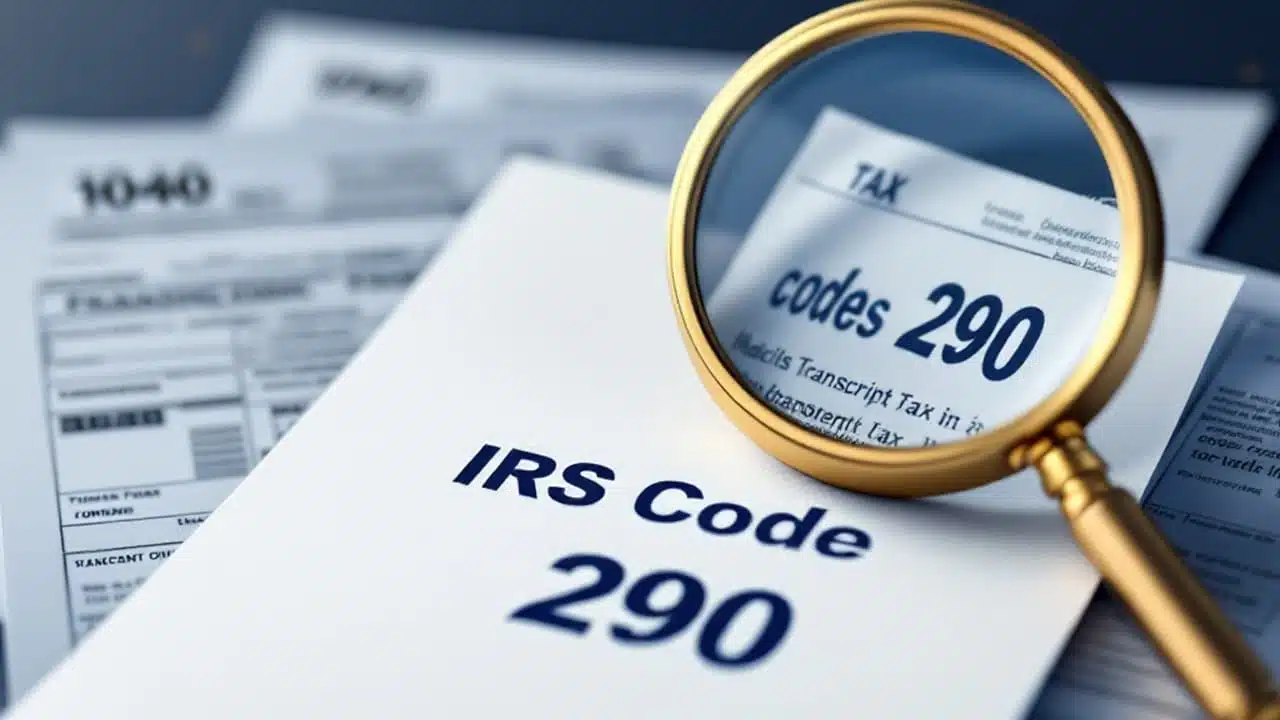Unlock IRS Code 290: Boost your Tax Savings Effortlessly!
If you’ve ever stared at your IRS tax transcript and spotted the cryptic “IRS Code 290”, your pulse might’ve quickened. Does this mean I owe more money? Did I make a mistake? Take a breath. You’re not alone – and that code isn’t a verdict. IRS Code 290 simply flags an adjustment to your tax account, whether it’s a refund boost, a neutral tweak, or (yes) a bill. But here’s the good news: Understanding this code puts you back in control.
In this guide, you’ll cut through the confusion. We’ll show you how to decode your transcript like a pro, spot red flags, and turn tax stress into savings – no law degree required. Ready to demystify IRS Code 290? Let’s dive in.
What is IRS code 290? (And why should you care?)
Let’s cut through the legalese. IRS Code 290 isn’t a bill, a penalty, or a scarlet letter from the tax agency. Think of it as a sticky note the IRS leaves on your account saying, “We tweaked something.” This code pops up when the agency adjusts your tax return – whether they’re fixing a typo, updating your refund, or (yes) flagging a balance due.
But here’s what most people miss:
Myth: “Code 290 = Owing money.”
Reality: It could mean more money in your pocket.Myth: “Adjustments are final.”
Reality: You can challenge them – if you know how.
Imagine the IRS as a meticulous editor reviewing your tax “manuscript.” Sometimes they add a comma (a minor correction), other times they rewrite a chapter (like recalculating credits). Code 290 is their way of tracking those edits.
Want to see it in action? Pull your IRS transcript – the official play-by-play of your tax account. Look for “Transaction Code 290” near adjustments. No panic required. Just clues to decode.
Next up: What triggers IRS Code 290? Let’s expose the usual suspects.
IRS code 290 Triggers: Audits, errors, or something else?
What flips the switch on IRS Code 290? It’s not random – the IRS has specific reasons for adjusting your account. Let’s break down the top culprits:
- Audits or reviews
The IRS might double-check your return, especially if income or deductions raise eyebrows. Even a routine review can trigger Code 290. - Math errors or filing mistakes
Claimed a deduction twice? Transposed numbers? The IRS fixes slip-ups and marks the adjustment with Code 290.

- Document mismatches
Your W-2 says $50K, but your return claims $45K. The IRS reconciles mismatches using third-party data (IRS audit guidelines). - Amended returns
Filed a Form 1040-X? Code 290 tracks changes from your updates.
Does IRS code 290 mean you owe the IRS money?
Not necessarily. IRS Code 290 is a chameleon – it can signal three outcomes:
The Good: The IRS adjusted your refund upward (e.g., adding missed credits). Cha-ching!
The Neutral: A clerical fix, like correcting a Social Security number. No dollars moved.
The Oops: Audit findings or income mismatches mean you owe tax. Common triggers include unreported income or disallowed deductions (IRS payment options).
Here’s the kicker: The IRS must mail a notice (CP21 or CP22) if money’s owed. No letter? Check your transcript’s “amount” column:
- $0: Adjustment closed. Breathe easy.
Positive number: Payment due. Act within 30 days to avoid penalties.
Disagree? You’re not stuck. Disputes start with a simple letter – more on that later.
Next: How to read your transcript like a tax pro.
How to decode your tax transcript like a pro
Your tax transcript is a treasure map – if you know where to look. Here’s how to spot IRS Code 290 and understand its impact:
- Log into your IRS account
Access your transcript here. Choose “Tax Return Transcript” for the full story. - Scan for “transaction codes”
Codes like 290 appear in the left column. Nearby numbers show the adjustment amount. - Check the “Amount” column
- $0.00: Adjustment resolved.
- Positive number: Potential tax due.
- Negative number: Refund incoming (look for Code 846).
Pro Tip: Code 150 means your tax liability is finalized. Pair it with Code 290? The IRS adjusted your bill post-assessment.
Still confused? Save a copy and circle Code 290. We’ll tackle disputes next.
Disputing IRS code 290: Your rights and roadmap
Got an IRS code 290 adjustment that feels off? You’re not powerless. Here’s how to fight back:
- Gather your evidence
Collect pay stubs, receipts, or forms that prove your case. - Write a dispute letter
Respond directly to the notice – cite documents and keep copies. - Mail it certified
Use USPS tracking to confirm the IRS receives your appeal. - Escalate if needed
No resolution? Contact the Taxpayer Advocate Service for free help.
Pro Tip: The IRS has 30 days to acknowledge your dispute. Mark your calendar and follow up.
Next: How IRS code 290 stacks up against other tax codes.
IRS code 290 vs. other tax codes: What’s the difference?
Tax codes are like road signs – each tells a different story. While IRS Code 290 flags general adjustments, other codes signal specific actions. Here’s how they compare:
| Code | What it means | Action needed |
|---|---|---|
| 290 | IRS adjusted your tax account | Review transcript for details |
| 291 | Prior tax reduced or removed | Check for updated refund amount |
| 150 | Tax liability finalized | Verify calculations match return |
| 846 | Refund issued | Track payment via IRS portal |
Notice Code 290 often pairs with others – like 150 (finalized taxes) or 846 (refund). For example, if the IRS adjusts your return (290) and approves a refund (846), your transcript tells the full story.
Confused by codes? Focus on the “amount” column first. Dollars or zeros reveal urgency.
Up next: Your step-by-step recap – and how to turn knowledge into action.
Master IRS code 290: Take control of your tax future today
IRS Code 290 isn’t a tax-time horror story – it’s a footnote in your financial journey. Whether it signals a refund boost, a clerical fix, or a balance due, you now have the tools to decode it like a pro. Remember: Adjustments aren’t final. With transcripts in hand and disputes in your toolkit, you’re equipped to challenge errors or strategize next steps.
But why navigate this alone? Ready to transform IRS Code 290 from a puzzle into a plan? Contact H&S Accounting & Tax Services today. Our experts streamline the process, turning confusion into action – and stress into savings. Let’s rewrite your tax story together.





